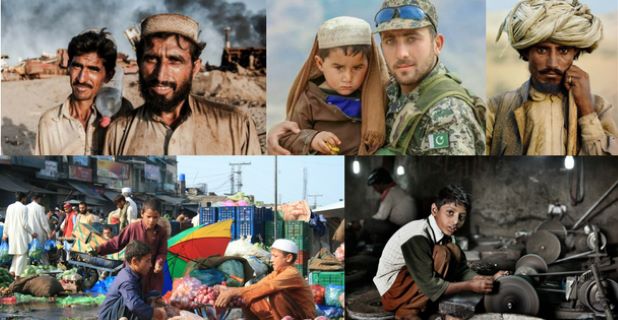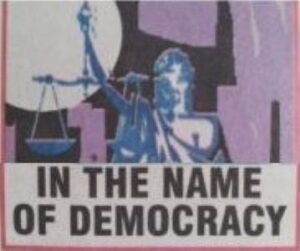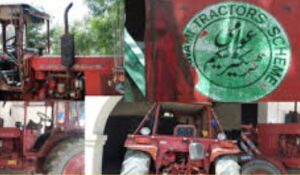Working class and the changing world

By Shahid Rizvi
With the invention of the transistor in 1950s, the world has undergone changes with a lightening speed. The scientific and technological revolution ushered in the 50s and still continues with a tremendous velocity has brought us from the transistor era to the digital era.
The revolution (STR) not only refined the quality of goods making it superior, it also increased the quantum many time and accelerated the speed of production. This change brought up the necessity of a world or unipolar market. All underdeveloped and developing countries were enveloped with developed countries and the scope of the market intensified.
This revolution not only changed the face of the economic world but also struck the social structure. Along with the production technology, there appeared a change in the production relations. The ownership relations took a new form and the dominant skeleton of ownership became one with a wider based from the old pattern of a single person and more varied status. Presently, this relationship is taking more wider forms and turning into majority shareholding by the public. The highest and most varied form is the ownership by multinationals. A multinational has its production activity in different countries with each country’s capitalists and public purchasing its shares. The ownership of plants and workshops and businesses have combined interests of the vast majority of public, although the management is held by a few big capitalists and the dividends are distributed according to their wishes.
The tremendous changes have their impact on the working class also. First let us explain the term working class. The term denotes two meanings. One that the society is divided into classes on the basis of ownership i.e.one class having full control and ownership of resources and the other class of real producers having nothing except their labour power which they sell and earn their livelihood. It clarifies the relationship of exploited and exploiter classes in the society.
The other meaning of this term is that the Working class is the force of real producers in the industry who are disciplined like an army, compelled by their living conditions to fight their exploiters incessantly, steeled in their struggle against exploitation, the most advanced class in the history, and politically capable of throwing off the yoke of exploitation with the help of its political organization.
After the fall of the Soviet Union, it was being claimed by many of the intelligentsia that the working class is on the wane or that the working class has now no role to play in the history because of the so-called ultimate victory pf capitalism on socialism.
This claim ignores many facts. Whether the division of society into exploiters and exploited has ended? Has the working class become from from exploitation? Has capitalism become able to solve the problems of society as it had been case in the socialist society? Has the capitalist society been able to cure the cancer of unemployment and poverty? Even a layman’s answer to these questions will be a big NO.
The development of capitalism needs detailed discussions which are being held in different quarters, but the fact is that this development has opened a thousand channels for the survival of this system. Not only the market development also banking, finance, share market, stock exchange, raw material market, research and development, distribution systems, communications etc., and thousands of sub-systems help and provide support to each other and make them stand on their feet. Even then the Black Monday-like crises are frequent and show the inherent contradictions of the system.
With the acceleration of production, the accumulation of very huge profits with the capitalist class and the state become possible and the emergence of welfare state was materialized.
The government under the pressure of the public, arrange to pay the unemployed a little subsistence to keep them alive and not die due to starvation. This to an extent solved the problem of unemployed. The exercise has an effect on the spirit of the working class.
The technological revolution also brought another big change. The standard of technical know how developed. The manual worker was no more required. Industrial worker has to be a skilled and technical worker. This on the one hand increased the job safety, and on the other, raised the salary standard.
The working class is not the old one which had to pass the whole life in slums, having no house, no education, no medicine, no electricity and amenities, no bread. The present working class, if we take the example of our own industrial workers specially of big workshops like Steel Mill, Shipyard, Telegraph workshop, and other industrial units, is totally different in status from the older generation. The working class is developing, and underdeveloped countries have attained a higher status in the society. The workers in developed countries have cashed its struggle and is in a much better position.
Another aspect of the technological revolution is that the clerical and officers cadre which stood much above level of the worker, had become downgraded because of the workers having been upgraded to a better status. The gap between the two has decreased. Those who were at time supposed to be part of management and policymakers feel themselves as much exploited as the workers. Everywhere an officer’s association is a good proof of it. This has increased the numerical strength although it has decreased the spirit of the working class.
The working class is exploited in the sense that its productivity is hundreds of times higher than its cost of maintenance i.e. it gets the minimum possible wages for its work. This remains a fact irrespective of the standard of living in a society.
With the changing conditions, the idea of a socialist revolution by overthrowing the capitalist class is no more viable. The spirit of the working class for revolution has also objectively diminished and the working class is not ready to force a revolution. The antagonistic feature has turned into non-antagonistic contradictions.
The option left to the working class is to struggle for the change of ownership of resources in a peaceful condition. With the struggle for the betterment of salaries and working conditions, the most vital and important aspect of the struggle should be to run for management and financial policies of the factory, control of the shop floor, control over labor affairs, control over raw material and controls over the distribution and market.








